
Antares

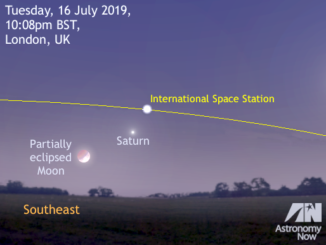
See the International Space Station above the eclipsed Moon on 16 July
The serene beauty of the International Space Station gliding silently across the sky needs nothing more than the naked eye to appreciate. But when the dazzling ISS is also in conjunction with a partially eclipsed Moon, Saturn and Jupiter on the 50th anniversary of Apollo 11’s launch, be sure to look low in the southeast through south around 10:06pm BST on 16 July 2019!
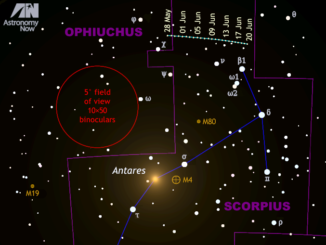
See dwarf planet Ceres at its best for 2019
Have you ever seen a dwarf planet? Of the five within our solar system recognised by the International Astronomical Union – Ceres, Pluto, Haumea, Makemake and Eris – only Ceres can be considered bright and easy to locate. It reaches opposition in the constellation of Scorpius on 29 May at magnitude +7, an easy binocular object if you follow our guide.

See the Moon and Jupiter get close in the small hours of 21 May
Observers in the UK with clear skies around 1am BST on Tuesday, 21 May can see Jupiter, the solar system’s largest planet, just 4 degrees from the waning gibbous Moon low in the south-southeast. At this time both the Moon and Jupiter fit within the same field of view of binoculars magnifying less than 10×, while telescope users can also view Jupiter’s Great Red Spot.
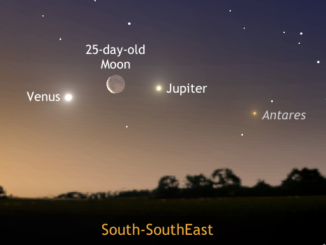
See a dawn triple conjunction and a lunar occultation on 31 January
Skywatchers in the UK and Western Europe should look low to the south-southeast an hour before sunrise on 31 January to see a beautiful naked-eye conjunction of Venus, the old crescent Moon and Jupiter, all within a span of 8½ degrees. But if you have a telescope and live in just the right place, you can also see the Moon hide a double star.

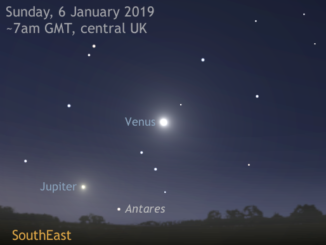
Venus dazzles at dawn, farthest west of the Sun on 6 January 2019
Brilliant planet Venus attains its greatest elongation almost 47° west of the Sun at dawn in the UK on Sunday, 6 January. Find a location that offers you a view down to the southeast horizon around 7am GMT and you may catch a glimpse of Jupiter too. The planetary duo is currently 14 degrees apart, but drawing nearer for a close conjunction on 22 January.
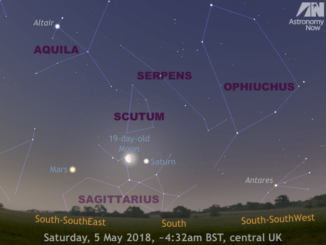
See the Moon get close to Saturn and Mars in the early morning sky
Although Jupiter close to opposition may be stealing the other naked-eye planets’ thunder, there’s lots more to see if you’re an early riser on the weekend of 5–6 May. About an hour before sunrise finds Mars and Saturn less than the span of an outstretched hand at arm’s length apart in the UK southern sky, with the waning gibbous Moon acting as a convenient guide to each planet on successive mornings.
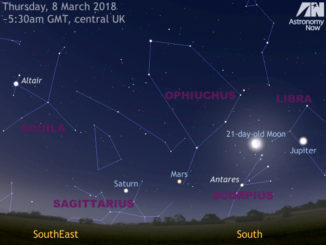
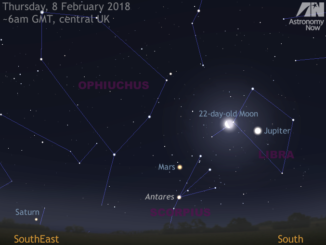
See the Moon’s dawn encounters with Jupiter, Mars and Saturn, 7–11 February
Set your alarm for 6am GMT if you wish to see three naked-eye planets in the UK dawn sky this week. Find a location that offers an unobstructed view of the horizon from southeast to south and let the waning Moon be your guide to locating Jupiter, Mars and Saturn on successive mornings from 7 to 11 February.
